Art preview: Where Are We Now
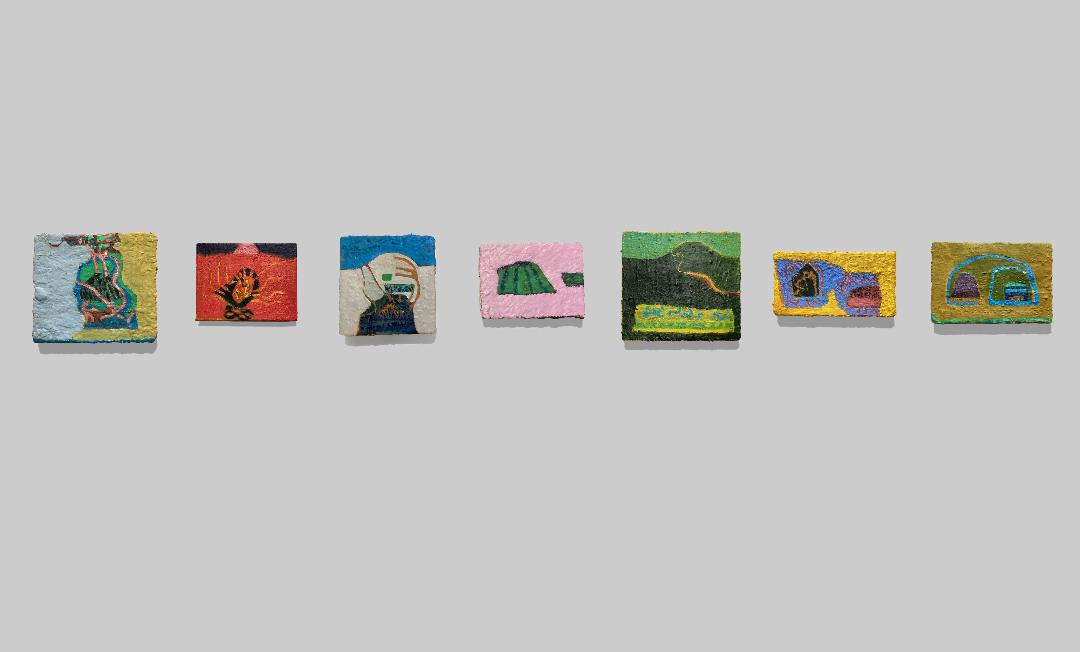
Where Are We Now
A new art show, opening next week at Cardiff’s Oriel Canfas, gathers together the experiences of women in south Wales during the lockdown.
Here, the contributing artists to Where Are We Now, organised by the Welsh Group, explain what that period meant to them and to the art they produce.
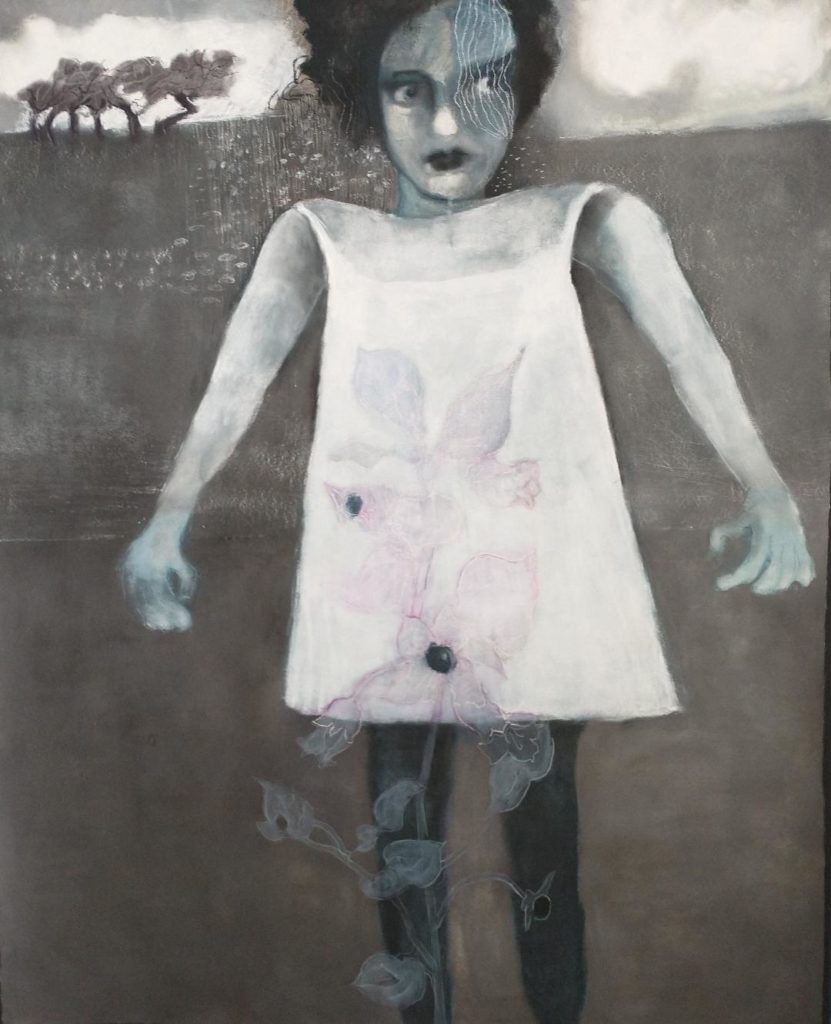
Jacqueline Alkema (contributing artist and curator of the show)
We all suffered during the pandemic and struggled to keep our sanity.
For some artist their creative spirit died because of loss and isolation but others felt, it may sound strange, invigorated by this situation.
For me to work in isolation without social contact or distractions was very beneficial and I produced a considerable body of work.
I also started working big which is unusual for me but to physically move about on the floor to create large pastels seemed to release some energy and emotion about the situation I found myself in, as a person and as an artist.
The flower series from the pandemic years depict women with a variety of poisonous flowers. Anxiety and melancholy crept into these female images.
After the pandemic I reverted to smaller formats but still painting about human vulnerabilities.
The girl and her dog series depict loss but at the same time consolation and perhaps a more hopeful future.
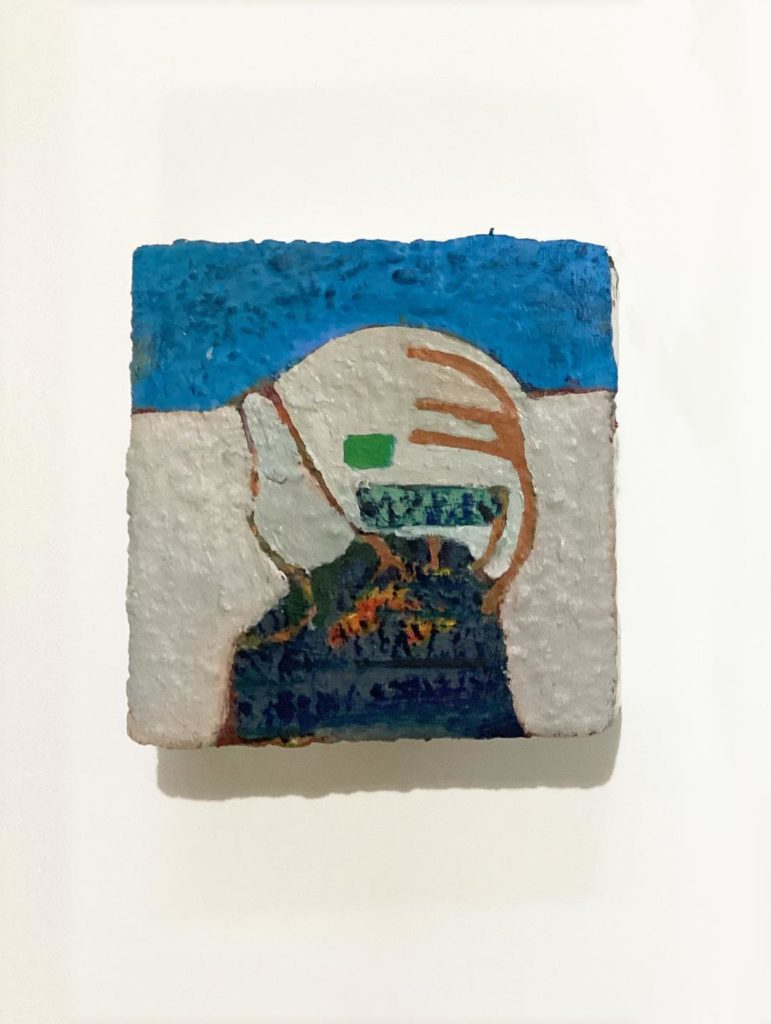
Jess Woodrow
The making of a space on a flat surface in such a way that allows the loss of orientation and scale is a magical thing to me.
Placing into this, ambiguous objects that are part of that space is how I lose myself. To be able to see any detail of my surroundings, I have to rush out to the periphery of the Universe and look back from there.
As if I’m looking back from the end of my life, or I’m a giant moving at the speed of light, and a painting has to be a blink of an eye but also a whole life.
I have no sense of time whatsoever. There is quite simply, ‘now’ and then there is ‘not now’.
Painting for me is an anxious process, as there are so many moments to capture in all the moments I spend painting; so much to gather before it disappears.
The smaller the canvas, the more paint, and the more moments spent on them. I paint to reveal possibility, to be able to see where I’m going, and to throw off confusing half-remembered baggage.
I paint to find some sense of continuity in my disparate world.
This is the view from where I’m standing.
Maybe Emily Dickinson says it better:
I saw no way – The heavens were stitched –
I felt the columns close –
The Earth reversed her hemispheres –
I touched the Universe –
And back it slid – and I alone –
A speck upon a ball –
Went out upon circumference –
Beyond the dip of Bell –
Post- pandemic work has become more determined to eradicate, as far as possible, any traces of nostalgia or cliché.
I attempt to achieve this by squashing experience, into some kind of motif that wants to be recognised without interpretation.
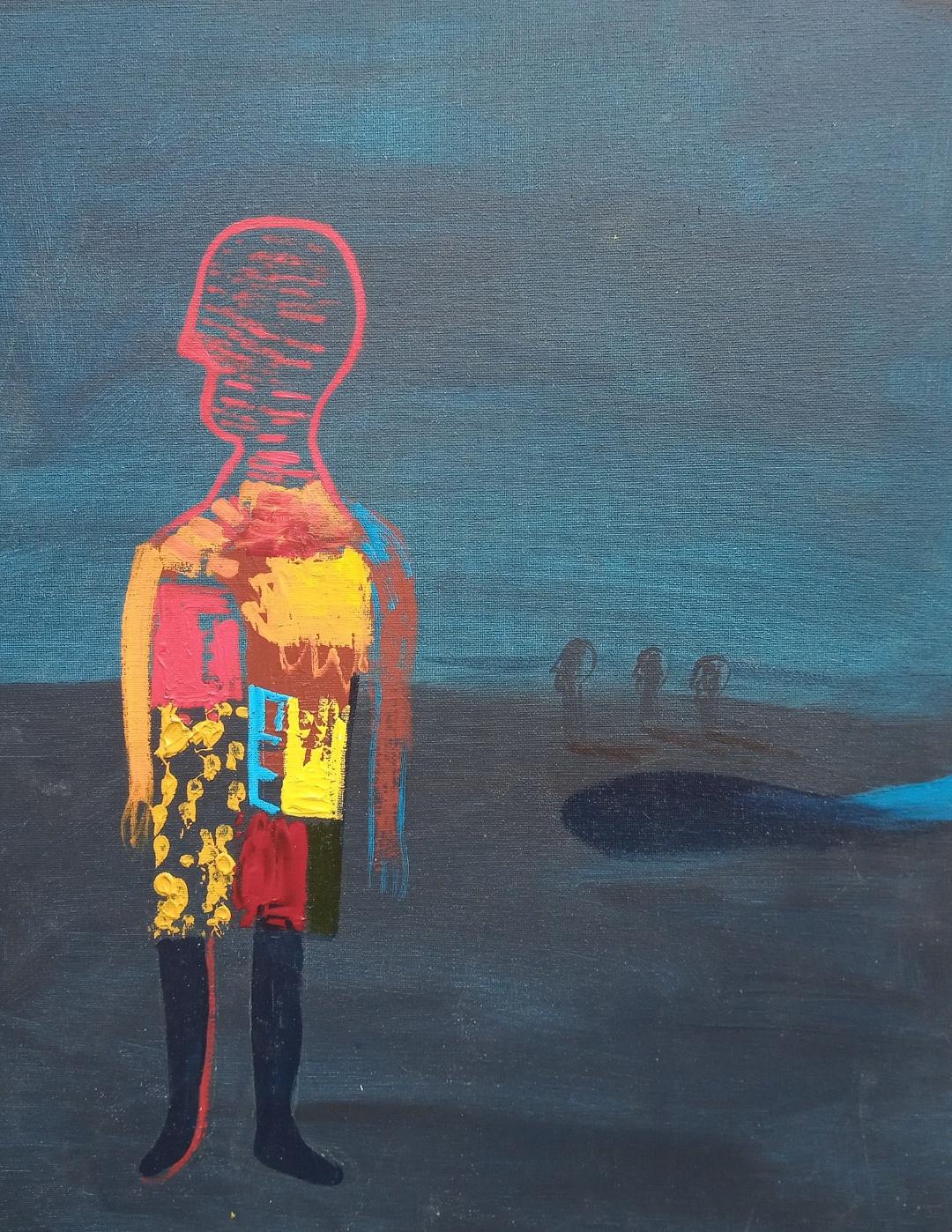
Jacqueline Jones
Time doesn’t exist, but change does.
Since Covid life has never been the same. During Covid I reconnected with my roots in Ceredigion.
I challenged myself to create a language unique to myself in paint, each expressive mark of paint perhaps making sense out of the void that was Covid, and the loss of friends.
Lockdown gave me valuable time to ponder my cultural inheritance. I revaluated my creative process and found myself on a new journey. I went deeper into myself and this was very fruitful. This led me to create I believe a more authentic art.
I returned to my roots, rich and alive with inventive imagery.
The places of the Mabinogion where the fertile myths were born are real geographical places.
Places where I grew up colours like coded language, and eco kingdoms of soil grounding the soul.
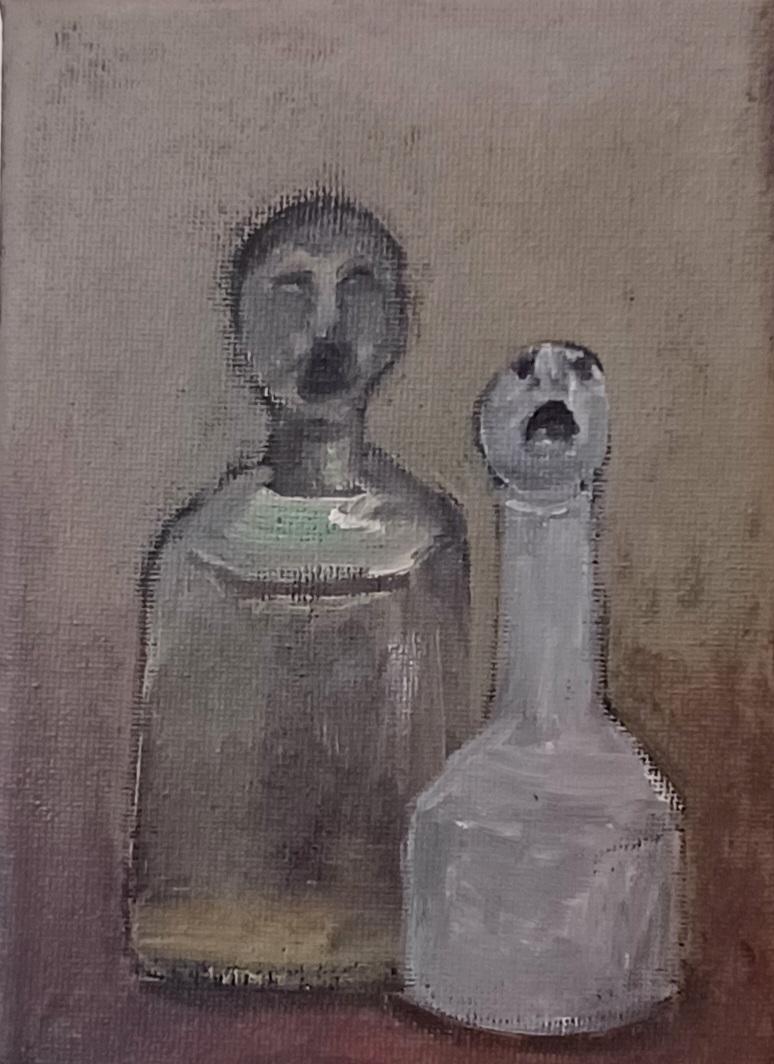
Karin Mear
When the lockdown was announced, it surprised me how everything around me changed virtually overnight.
The already quiet estate of bungalows that I lived on appeared totally deserted and it was eerily quiet.
Initially I found it a relief to be confined to the house. I realised that I was very tired and, being with family I didn’t experience the loneliness that others were experiencing.
I became quite inactive, physically and creatively and spent most of my time sleeping and baking and watching birds in the garden. I was unhappy anyway – the estate that I lived on was full of unseen, elderly retirees and it felt like a last stop in life.
I had hit a wall. A darkness had engulfed me.
I engaged in a lot of online retail therapy. Art materials – that arrived with promises of creative release and vintage pie funnels that I was collecting obsessively.
The pie funnels hinted at domesticity and caring, but were also a symbol of pressure and release with their ability to let out steam.
Pie funnels are often hand made and there are hundreds of different designs including some in the form of blackbirds which I’m attracted to as I have a lifelong affinity with birds.
Towards the end of lockdown I started to create art and I used the pie funnels as a way to, metaphorically, let off steam.
Along with other domestic related found items the pie funnels represented a past way of life, with the contradictions of comfort food and the stresses of family mealtimes.
I started the painting, ‘Bungalowland’ soon after lockdown and since then it’s undergone many changes.
I no longer live on the estate. The darkness is still there but in many ways I now crave the silence.
My work still contains a narrative of discontent which I keep returning to and I’m struggling to resolve.
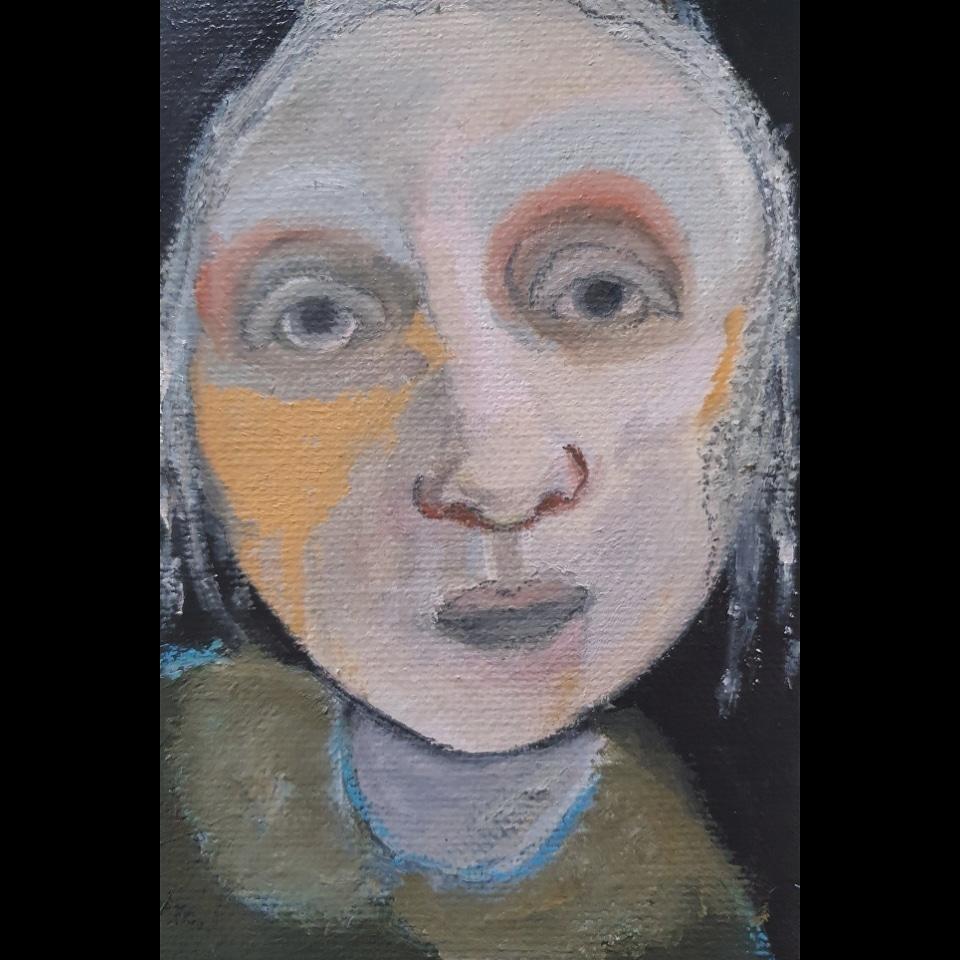
Kay Keogh
The title of this exhibition, ‘Where are we now,’ rightfully positions me to look at my art practice today. I feel I need to look back to remember the recent past and the effects Covid had on all our lives, to understand where I am now with my art.
The restrictions of lockdown, brought about by Covid 19 virus, varied in people. Many had feelings of anxiety, isolation, fear, stress, and loss, just a few emotions that were felt at the time.
The series of paintings ‘Familiar Strangers’ seem to encompass many of these emotions. Experiences I was feeling at the time.
In some it caused a shift to enjoy simpler pleasures and seek unrestricted activities such as walking and sea swimming and embracing conversation with neighbours and family, but still an awareness of space and safety.
This is reflected in the painting of the Sea Swimmer.
Moving forward to where we are today, things have relatively returned to normal. Boxing Day, sea swimmers at Langland Bay Gower was a festival of bathers, families all enjoying the throng of the crowd, embracing a chilly dip in camaraderie and unison.
Where Are We Now opens at Oriel Canfas, Glamorgan St., Cardiff on March 30th.
Support our Nation today
For the price of a cup of coffee a month you can help us create an independent, not-for-profit, national news service for the people of Wales, by the people of Wales.




